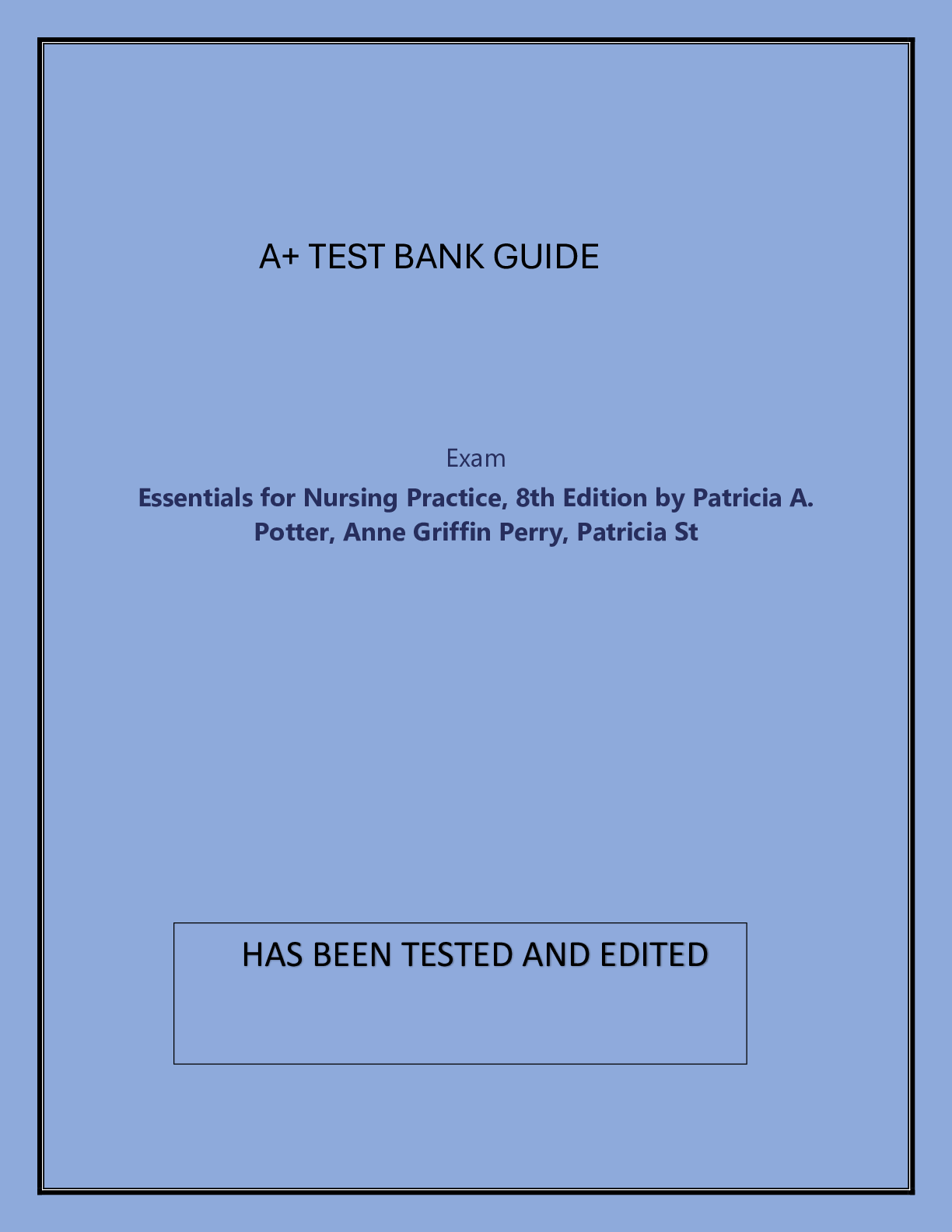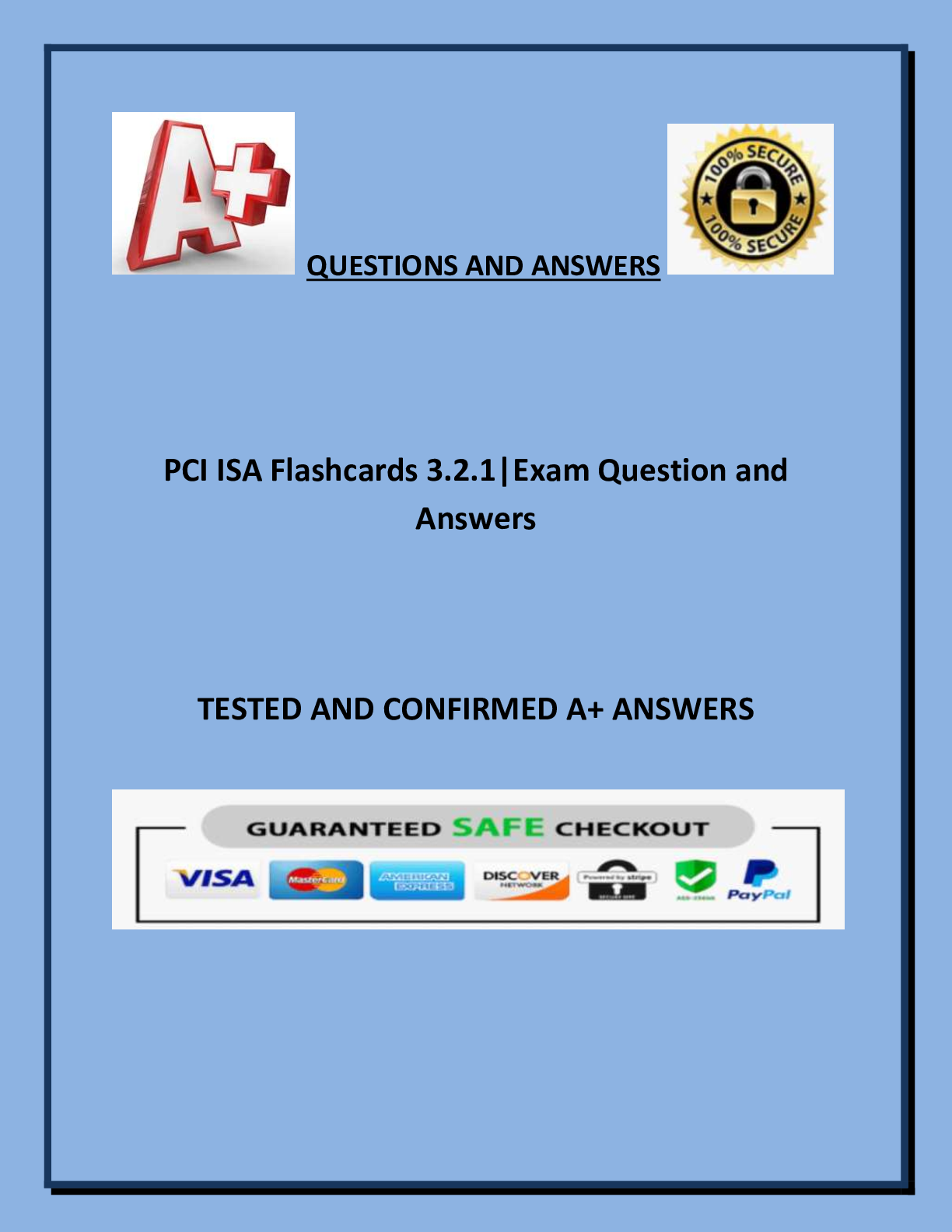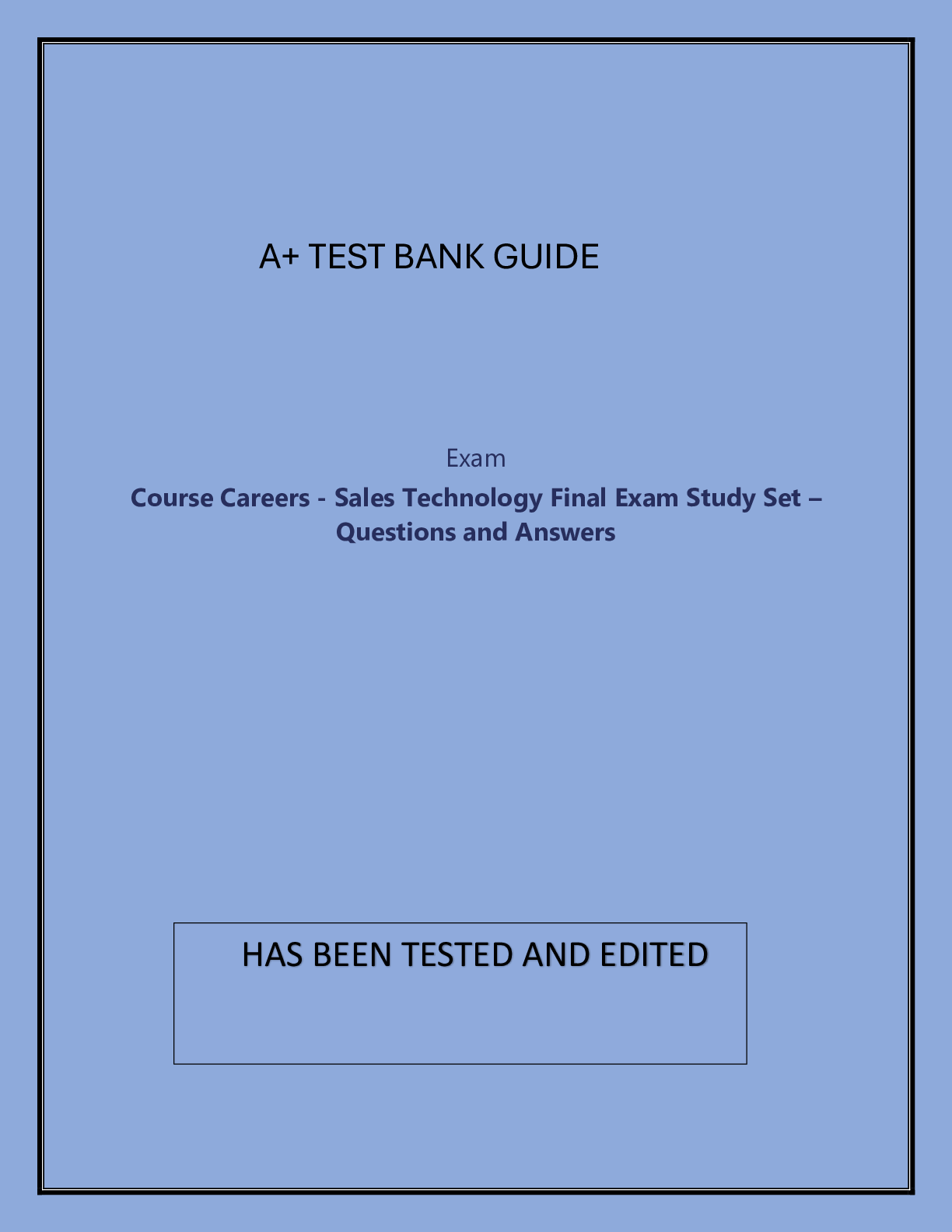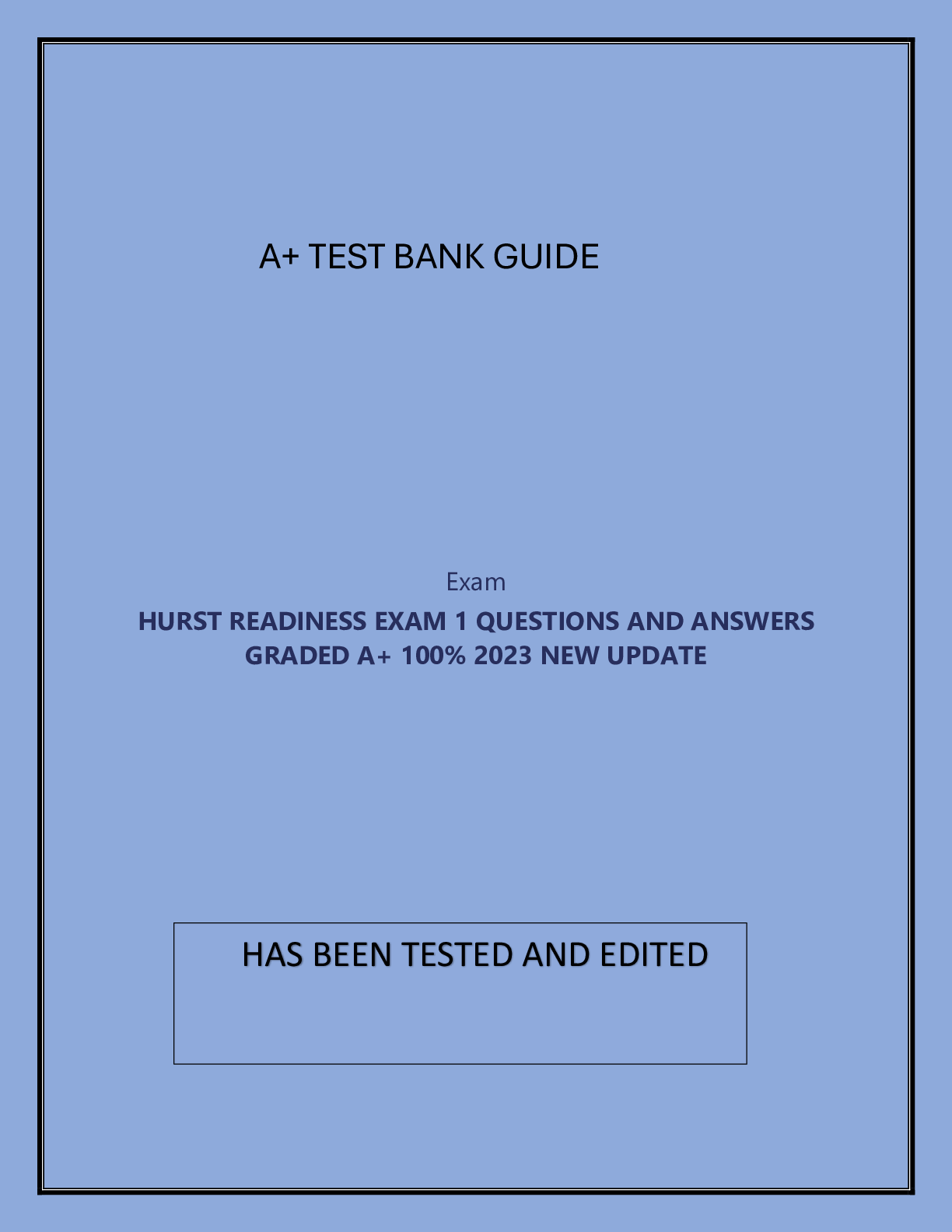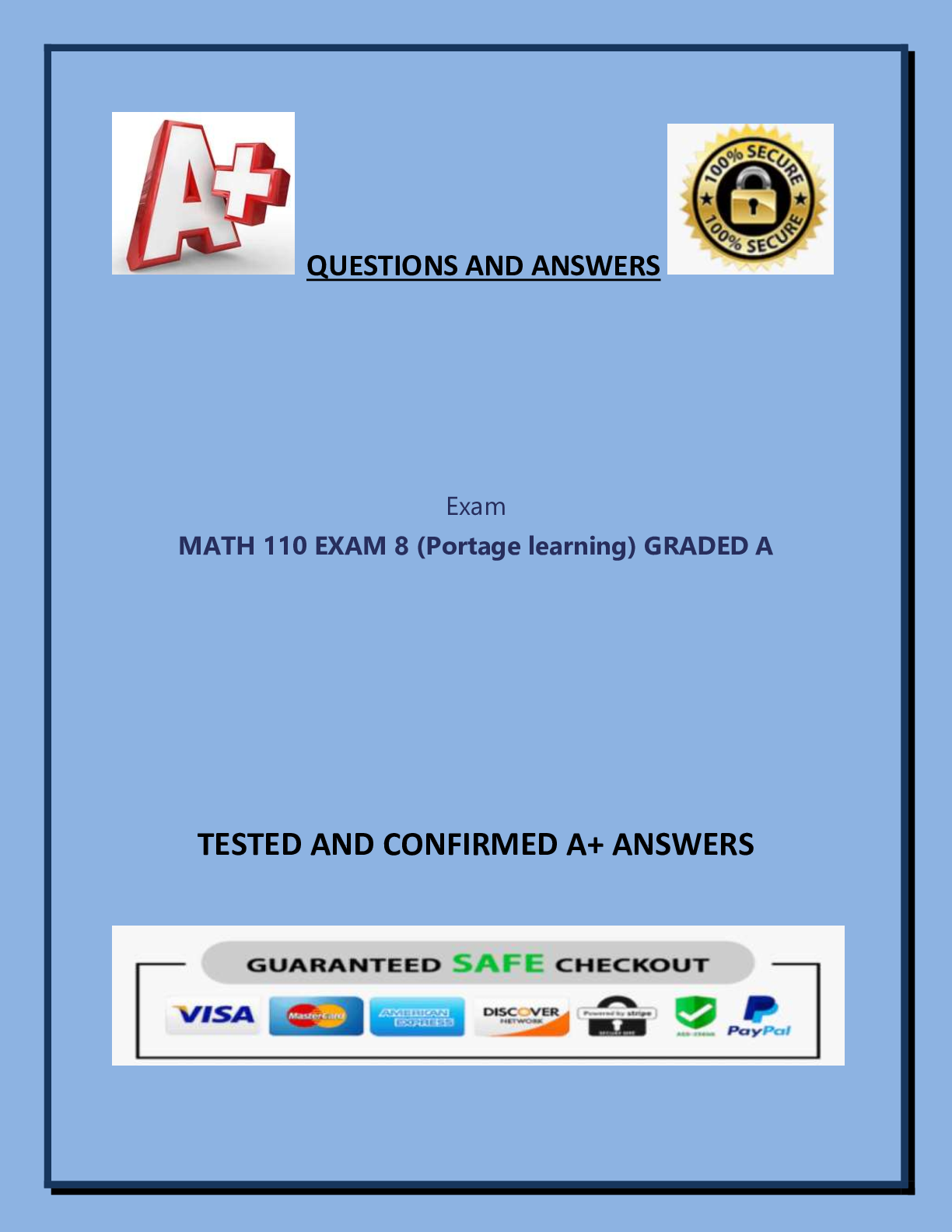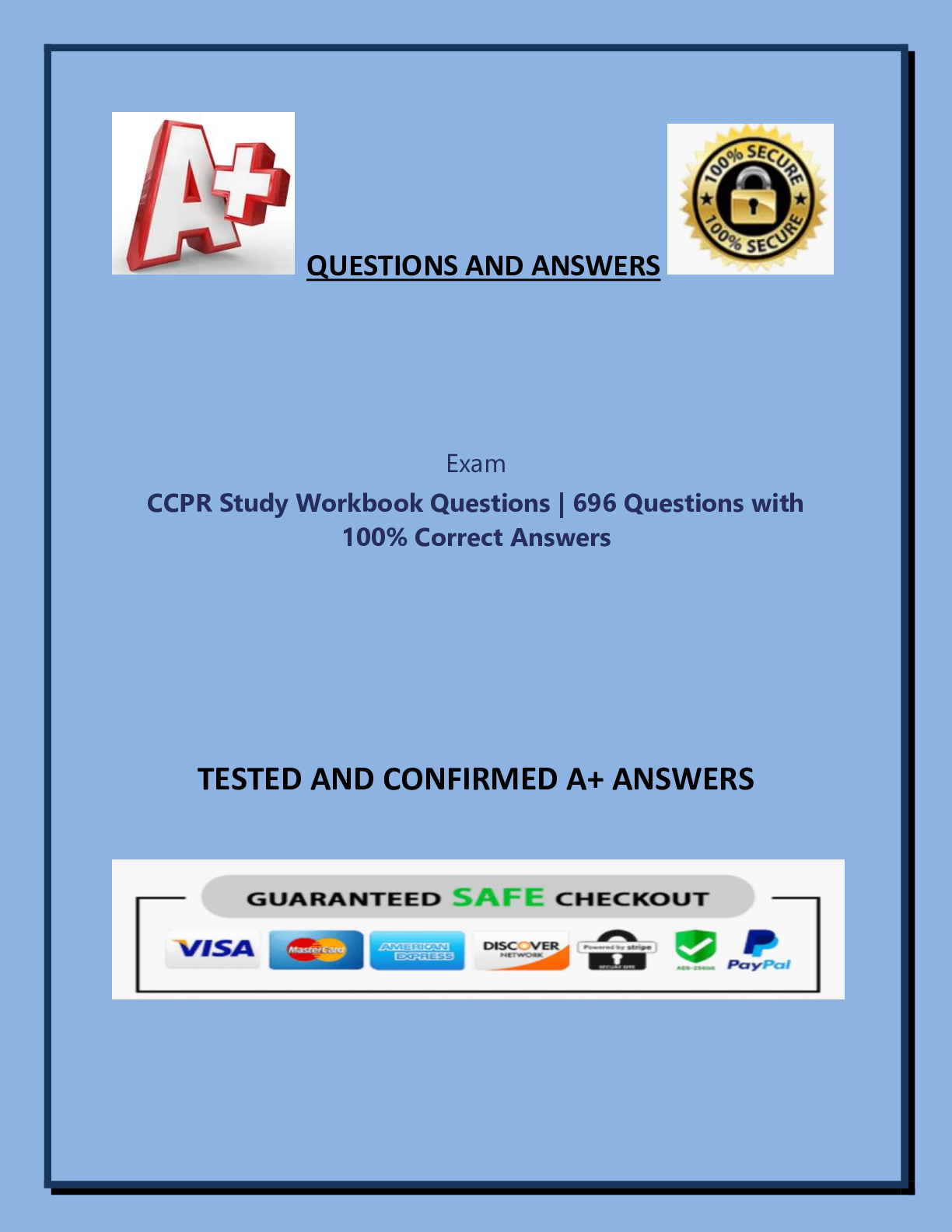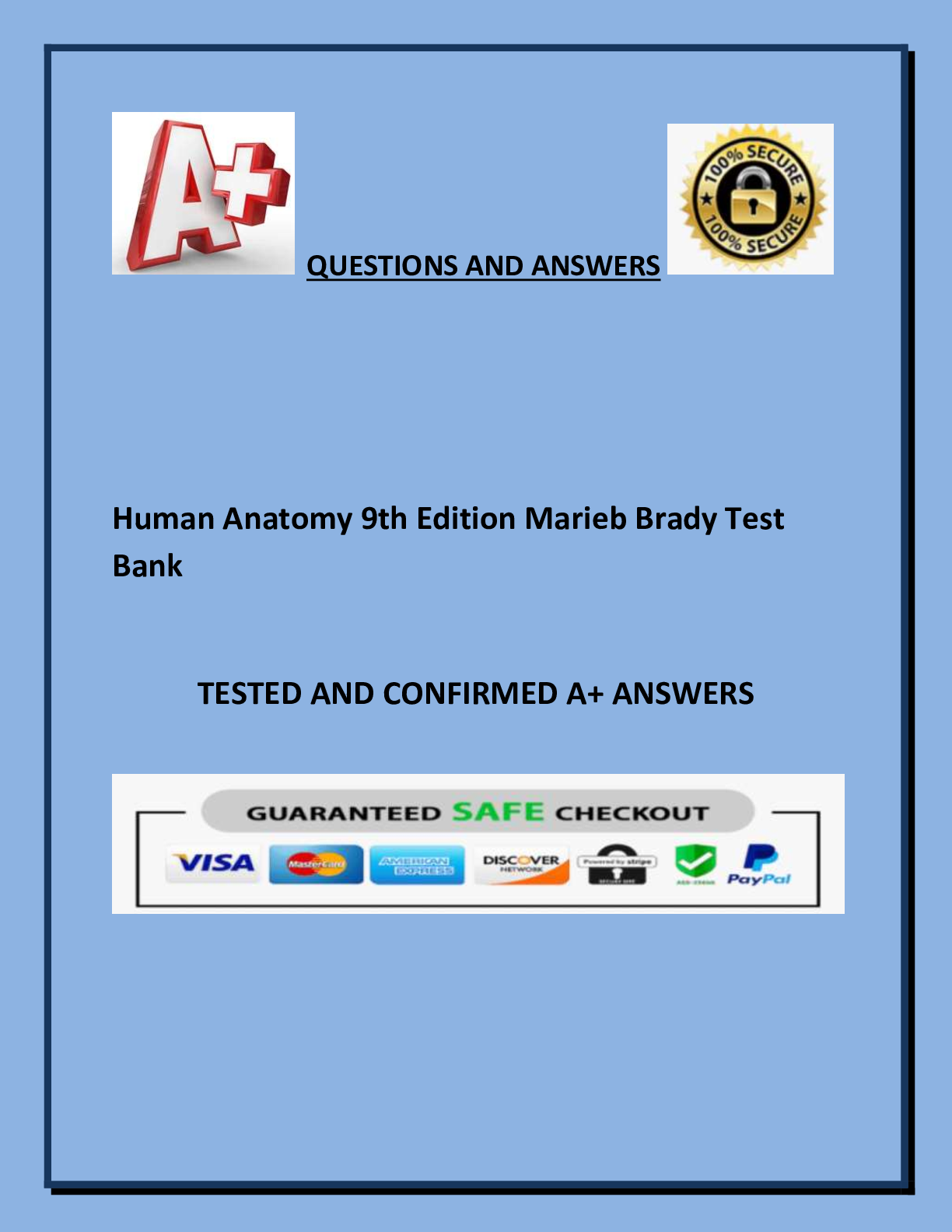Biology > A-Level Question Paper > BIOD 171 Portage Learning Exam 3 (All)
BIOD 171 Portage Learning Exam 3
Document Content and Description Below
TESTED AND CONFIRMED A+ ANSWERS True or False: A virus is considered a microorganism. False. Viruses are not living and as such are not considered microorganisms. Viruses can, however, be classifie... d asmicrobes, a more general term that includes microorganisms and viruses. 1. What is the smallest biological unit of life? A cell. 2. At a generalized level, all cells are comprised of what? Macromolecules* *A student may also answer: Proteins, Lipids, Nucleic acids and Polysaccharides but they must answer with allfour to be fully correct. 1. Which of the following microorganisms are considered to be Eukarya? Select all that apply. A. Animalia B. Plantae C. Fungi D. Protista A,B,C,D 2. True of False: All multicellular microorganisms classified as Animalia are heterotrophic. True 3. Microorganisms classified as Plantae obtain most of their energy by converting energy into energy. Light (sunlight); chemical (sugars) 1. Define catabolism. Catabolism is the process of breaking down larger molecules into useful energy sources. 2. Upon cellular injury, which metabolic process is involved during the growth and repair phases of the cell?The anabolic process would be active as it (by definition) is involved in the building up of small complexes into larger complexes. 1. In phosphorylation, the light reactions always occur where? The process of converting light energy into chemical energy (photophosphorylation) always occurs in themembrane. 2. True or False: The Calvin cycle must occur in the absence of light. False. The term ‘dark reactions’ (also known as the Calvin Cycle) simply denotes the second stage inphotosynthesis—dark reactions do not actually require darkness in order to occur. 1. Assuming a constant (non-adjustable) light source power, identify the part of the microscope you wouldadjust to limit the amount of light entering the microscope. Select all that apply. A. Objective B. Condenser C. Iris diaphragm D. Eye piece C. The iris controls the amount of light that passes through the sample and into the objective lens. Thus, it canbe adjusted (opened or closed) to alter the amount of light. [Show More]
Last updated: 1 year ago
Preview 1 out of 45 pages
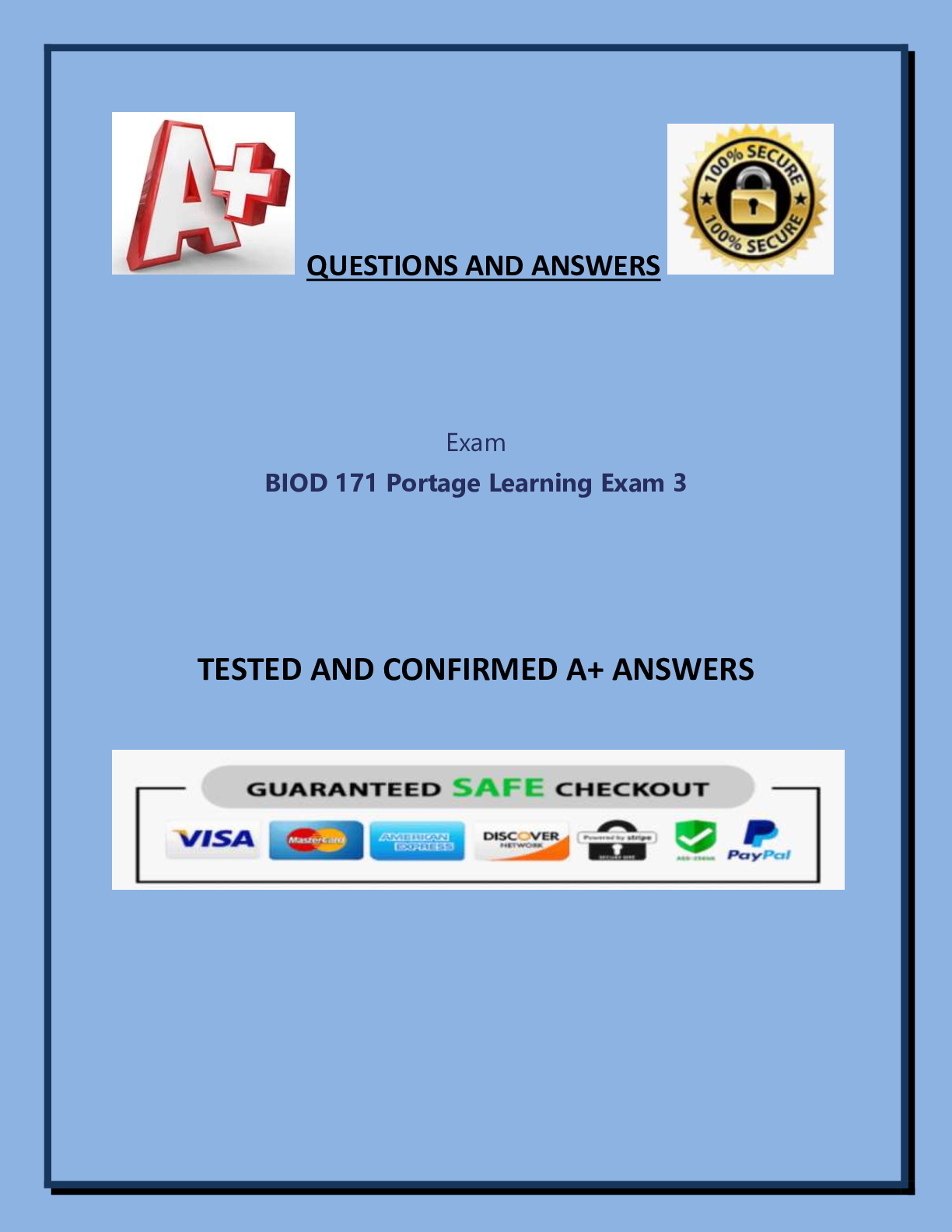
Buy this document to get the full access instantly
Instant Download Access after purchase
Buy NowInstant download
We Accept:

Reviews( 0 )
$16.00
Can't find what you want? Try our AI powered Search
Document information
Connected school, study & course
About the document
Uploaded On
Apr 10, 2024
Number of pages
45
Written in
Additional information
This document has been written for:
Uploaded
Apr 10, 2024
Downloads
0
Views
41

